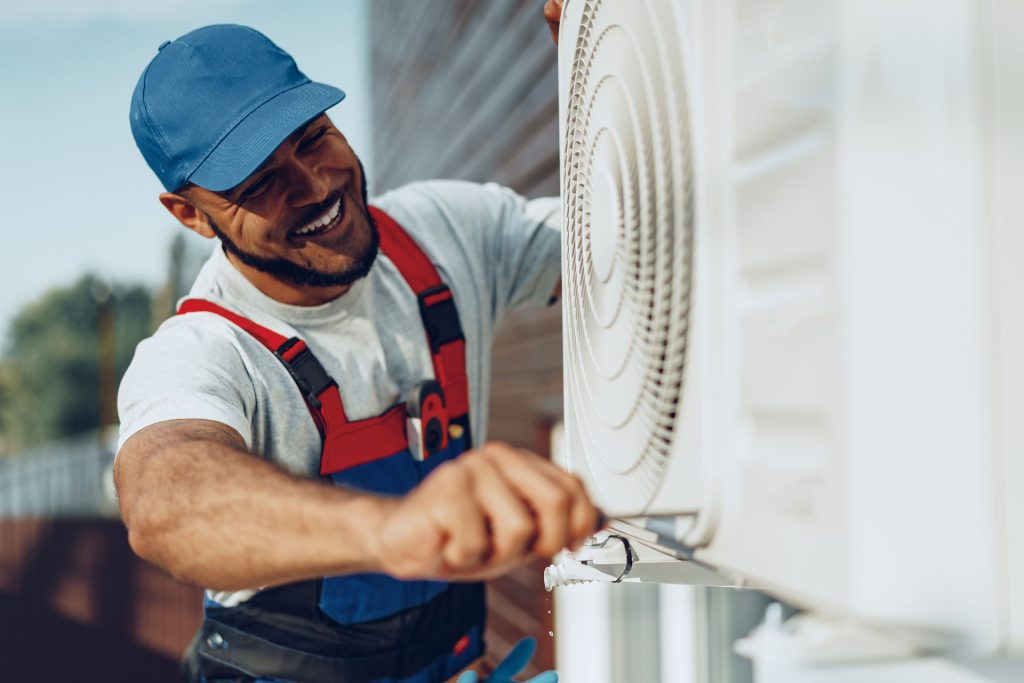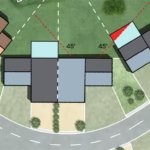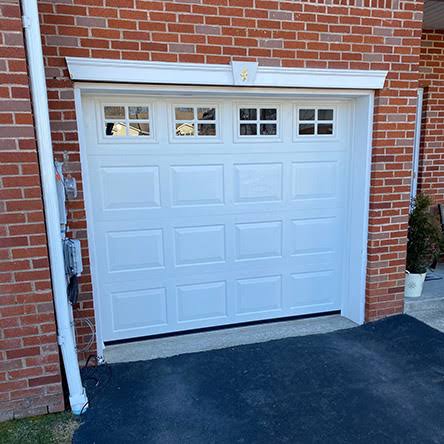When the hot summer days roll in (and even mild UK summers are getting warmer), investing in a quality air-conditioning system is increasingly becoming a smart decision. This guide takes you through the full process of airconditioning installation, from assessing your space, choosing the right system, installation steps, and the after-care you’ll need to keep it running efficiently. All of this is based around how Micro Climate helps you with these steps — so if you’re considering using their services, you’ll know exactly what to expect.
Why Install an Air Conditioning System?
Let’s start with the “why”. Many UK homes and businesses have traditionally relied on natural ventilation or simple fans. But modern air-conditioning systems (cooling + heating) offer far more in terms of comfort, efficiency and long-term value.
Here are key reasons:
- Comfort in summer: Even in the UK, the ambient temperature and humidity can become oppressive; a fitted air-con system delivers consistent cooling rather than the patchy relief of a portable unit.
- Year-round heating option: Many modern systems are heat-pump based, allowing you to both cool in summer and warm in winter — advantageous in the UK climate.
- Improved indoor air quality: Sophisticated systems filter and dehumidify air; especially important in urban settings. For example Micro Climate highlight modern filtration systems in their home-install offering.
- Value-adding to property: A professionally installed AC system can enhance livability, which helps with resale value or longer-term comfort.
- Energy efficiency and smart control: Modern inverter-driven units, smart controls, zoning and correct design mean lower energy usage. Micro Climate mention SEER/SCOP ratings and refrigerants such as R32.
For businesses (offices, retail, hospitality) the benefits extend to productivity, customer comfort, and maintaining internal environmental stability. Micro Climate’s commercial division focuses on these kinds of systems.
What Type of System Should You Choose?
One of the first major decisions in installation is what kind of air-conditioning system you need. Micro Climate lays out the common types and which spaces they’re suited for.
Wall-mounted Split System
- A single indoor unit mounted on a wall, with a corresponding outdoor compressor/condenser.
- Ideal for one room or lounge/bedroom installs.
- Clean, straightforward, minimal ductwork.
- Micro Climate quote typical cost “from £1,300” for one room.
Multi-split System
- One outdoor unit, multiple indoor units (rooms).
- Good for homes with a few zones or multiple rooms to cool/heat.
- Offers independent control per room.
Ducted Systems
- Hidden indoor unit(s) distributing air via ducts to grilles in ceilings/walls.
- Suited for larger homes or where minimalist aesthetics matter (no visible indoor unit).
- More complex install (ceiling space required).
VRV/VRF (Variable Refrigerant Volume/Flow) Systems
- Advanced multi-zone systems, multiple indoor units, large commercial properties, hotels, multi-storey homes.
- Flexible, efficient, good for complex installations. Micro Climate installs these for commercial projects.
Portable AC Units
- No fixed installation required; plug-in devices.
- Less efficient, less aesthetic, best as temporary solutions or for renters.
- Micro Climate mention them but emphasise fitted units for long-term comfort.
The Installation Process – Step by Step
Micro Climate outlines a clear, professional five-step process. Let’s walk through what you, the customer, can expect.
1. Initial Consultation & Site Survey
- The installer visits your property, checks room size, layout, current insulation, electrical supply, external wall/floor access, etc.
- They will assess where the indoor and outdoor units will go, pipe-runs, drainage, noise considerations.
- Micro Climate emphasise load calculations and brief for commercial installs.
2. System Selection & Proposal
- Based on the survey, the installer recommends the best system type, sizing (kW capacity), indoor unit style (wall, cassette, ducted), refrigerant type (R32, etc).
- They prepare a transparent fixed quote: including indoor & outdoor units, control system, pipework, wiring, installation labour, commissioning.
3. Installation
- Qualified engineers (F-Gas certified) carry out installation: mounting indoor units, running refrigerant pipes, electrical wiring, installing outdoor condenser, drilling external wall for pipe access, connecting controls.
- Testing and commissioning: vacuuming pipes, checking refrigerant charge, verifying leak-tight, verifying controls and warranty registration. Micro Climate detail this for both home and commercial installs.
4. Handover & Training
- Once installation is complete: unit is fully operational, they walk you through controls, remote/app use, basic filter maintenance.
- They provide documentation: O&M manual, commissioning certificate, warranty registration.
- Micro Climate mention that typical home install can be done in 1-2 days.
5. After-care & Maintenance
- To ensure longevity and performance, regular servicing is essential: cleaning filters, checking drainage, refrigerant levels, coils, looking for wear.
- Micro Climate offer maintenance plans and priority repair service.
Cost Guide & Factors to Consider
Understanding costs is key for budgets and expectations. Micro Climate provide helpful guidance.
Typical Price Ranges (UK)
- Single room wall-mounted split system (including install): from about £1,300.
- Multi-split (2-3 rooms): from ~£2,500 or more depending on size.
- Ducted or whole-home systems: often £4,000+ depending on complexity.
- Commercial/VRF systems: custom pricing – large scale, multi-zone.
Cost Influencing Factors
- Size of space (m²) and number of zones.
- Access: how easy is it to install outdoor unit, route pipes, access walls/ceiling.
- Existing infrastructure: does loft space or ceiling void exist, or need to add ducting.
- Choice of brand and model: inverter tech, smart controls, high efficiency units cost more but run cheaper.
- Running costs: efficiency (SEER/SCOP), refrigerant type (R32 is more eco-friendly), insulation, orientation of property. RG: Micro Climate highlight these.
- Planning/permissions if required (for listed buildings, flats, conservation areas). Micro Climate mention this for UK home installs.
Running Cost Estimates
- Micro Climate estimate typical summer usage (split system average use) at about £20-£40/month per room.
- Note: Running cost is lower if the system is well-sized, installation is correct, insulation is good, smart controls are used.
Choosing the Right Installer – What to Look For
Selecting the right company is just as important as the system. Here’s what to check:
- Ensure the installer is F-Gas certified (required for refrigerant works). Micro Climate emphasise this.
- Check they are experienced in your type of installation: residential vs commercial, scales of system.
- Ask for clear fixed proposal: itemised breakdown (units, installation, controls, etc).
- Ensure warranty is provided and registered.
- After-care service: maintenance contracts, emergency repairs.
- Check brand partnerships and spare-parts availability: Micro Climate mention they install Daikin, Mitsubishi, Gree etc.
- Ask about planning/permissions if needed (especially flats, listed buildings).
- Look at reviews, references, case studies.
Installation Best Practices & Pitfalls to Avoid
Having installation done correctly will determine how efficient and comfortable your system will be. Micro Climate and industry sources highlight critical considerations.
Placement & Positioning
- Indoor units should ideally be placed high on central walls where airflow can spread across the room.
- Outdoor units must have adequate ventilation, clear airflow, stable mounting, minimal noise to neighbours.
- Avoid placing indoor units on south-facing walls subject to direct sun (this compromises thermostat reading and efficiency) — industry caution.
- Avoid placing units where furniture or curtains block airflow or where the unit will blow directly onto beds/sofas.
- In kitchens or high-heat rooms, special care is needed — these rooms generate heat and humidity which can reduce system efficiency.
Sizing & Load Calculation
- The system must be correctly sized: too small = underperformance; too large = inefficient short-cycling and higher cost. Micro Climate emphasise this.
- Proper load calculation takes into account insulation, room size, glazing, heat load, orientation.
- Zoning helps: controlling different rooms separately gives better comfort and saves energy.
Electrical & Refrigerant Compliance
- Installation must comply with UK building regulations, F-Gas regulations, refrigerant handling. Micro Climate highlight compliance and documentation.
- Refrigerant choice matters: newer refrigerants like R32 are more environmentally friendly (lower global warming potential).
Clean Installation & Commissioning
- It’s important the installation is done with minimal disruption: neat pipework, proper insulation, no mess left behind. Micro Climate promise “neat, clean, and usually done in a day” for home installs.
- Commissioning: vacuum the lines, check refrigerant level and pressure, test controls, show the user how to operate the system.
Maintenance & Longevity
- Regular maintenance keeps the system running at peak efficiency and preserves the warranty.
- Simple tasks you can do: clean or replace filters every 1-3 months; keep outdoor condenser clear of debris. Micro Climate mention this.
- Annual professional service: check refrigerant, coils, electrical connections, drainage, controls.
- Run settings sensibly: avoid over-cooling or running system at full blast all day unnecessarily.
Common Mistakes To Avoid
- Installing a unit that’s too large for the room.
- Installing indoor unit where airflow is blocked by furniture or curtains.
- Outdoor unit placed in poorly ventilated location or directly facing neighbours / property boundary.
- Neglecting insulation or shading of the room — then the system has to work harder.
- Skipping maintenance, leading to filter-clog, coil fouling, degraded performance.
- Choosing an installer who is not certified or cannot provide after-care.
Why Choose Micro Climate for Your Air Conditioning Installation?
Now to tie it back to the target page/company: Micro Climate. Here are the reasons they stand out (and you might consider them):
- They handle both residential and commercial installations — so whether it’s a single room or multi-zone system, they have the expertise.
- They provide a full design-install-maintenance service: survey, design, fixed quote, installation, commissioning, after-care.
- Use of high-quality branded systems (Daikin, Mitsubishi, Gree etc) ensures reliability and spares availability.
- Transparent pricing and clear process: their home-install page lists typical costs, timeline, and what to expect.
- Strong focus on compliance, professional installation standards (F-Gas certified engineers, method statements, risk assessments).
- After-care and maintenance: they offer servicing and priority repair, which helps system longevity.
If you engage them, you can expect one clear point of contact, a schedule, and minimal disruption: their FAQ says installation typically takes 1 day for wall-mounted units.
Frequently Asked Questions
Here are some FAQs you might have, and the answers:
Q: How long does installation take?
A: For a standard wall-mounted split system in a home, typically 1 day. Larger systems may take 2 days or more depending on complexity.
Q: Do I need planning permission?
A: In most houses, no planning permission is required for standard AC installs. However, in listed buildings, conservation areas, or flats with shared walls, you should check with your council or freeholder. Micro Climate highlight this.
Q: How much will it cost to run?
A: Micro Climate estimate for a typical split home system: about £20-£40/month in summer per room (assuming good insulation etc).
Q: Can the system also heat?
A: Yes — many modern AC units are heat pumps and can provide heating as well as cooling, making them a year-round solution.
Q: What about maintenance?
A: Clean filters every 1-3 months; annual professional servicing is recommended. Firmware/controls update, refrigerant check and coil/pipework inspection are necessary to maintain warranty and performance.
Closing Thoughts
In short, choosing to install a proper air-conditioning system is more than just buying a machine—it’s about enhancing your comfort, improving indoor air quality, and investing in your property’s future. With companies like Micro Climate offering professional survey-design-install-maintain services, the process is much more streamlined and transparent than ever.
If you’re on the fence about whether to go ahead:
- Consider the scale of your need (single bedroom, loft conversion, whole house, commercial space).
- Ensure your installer is certified, clear about costs, and well-reviewed.
- Make sure your space is suitable (access, insulation, location).
- Don’t delay – as UK summers get warmer, demand and installation wait-times may increase.






